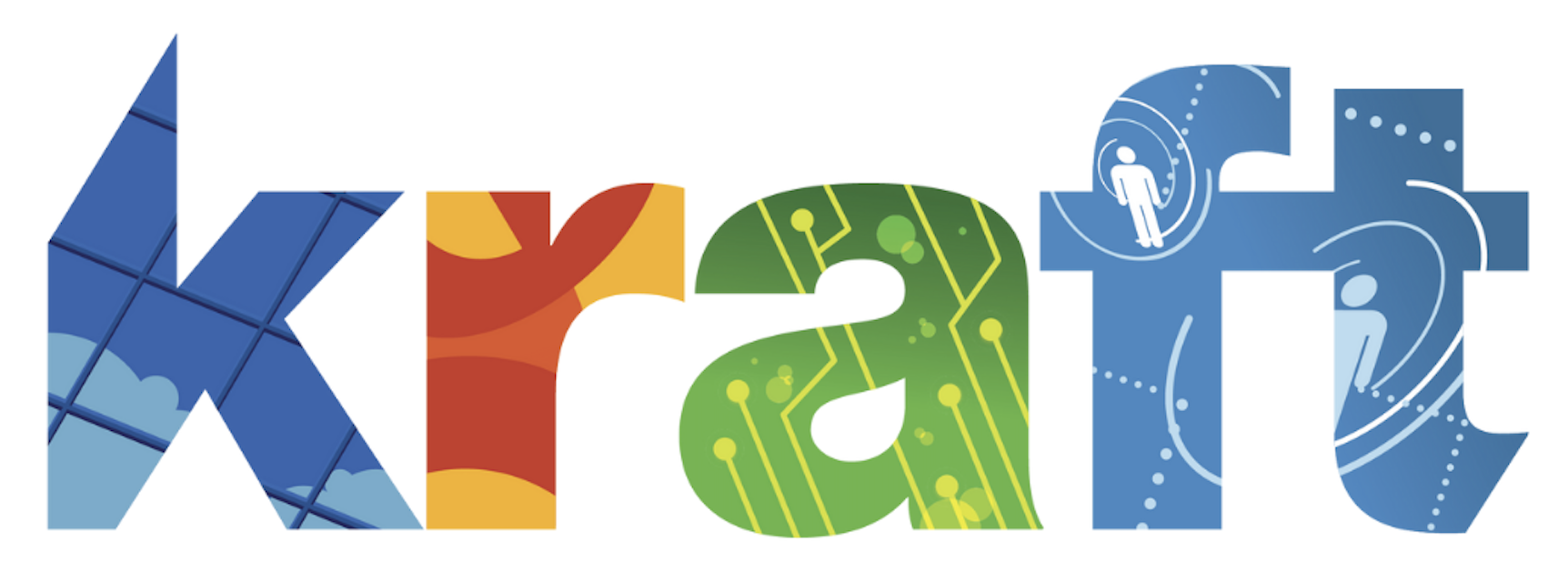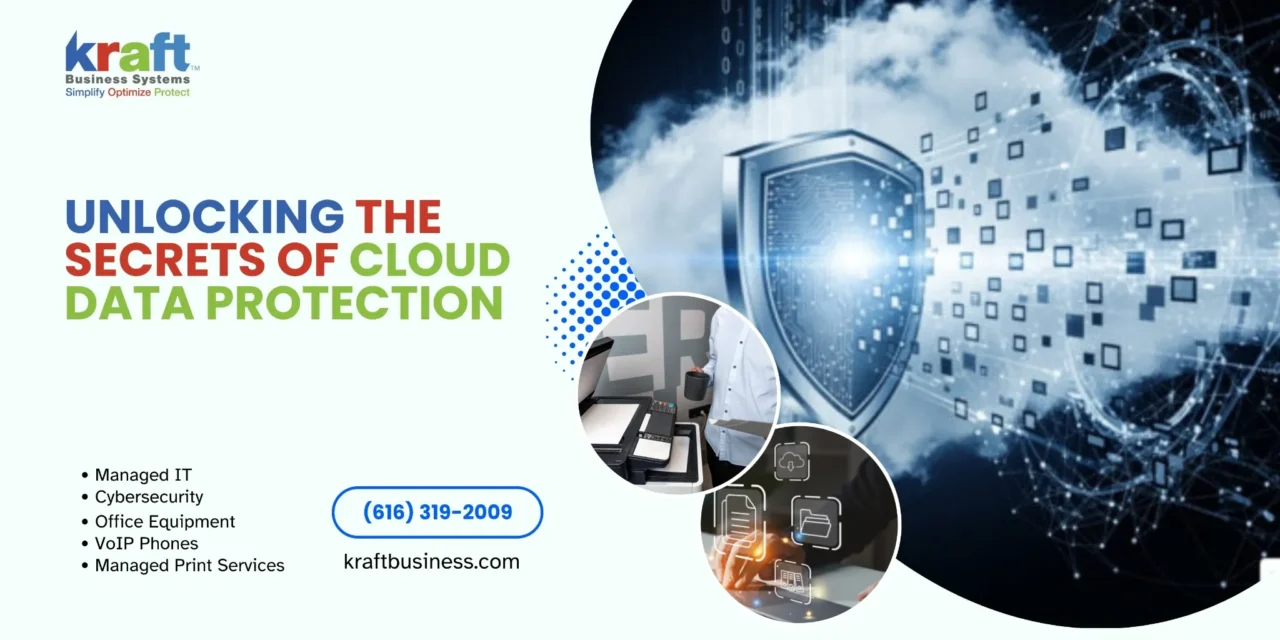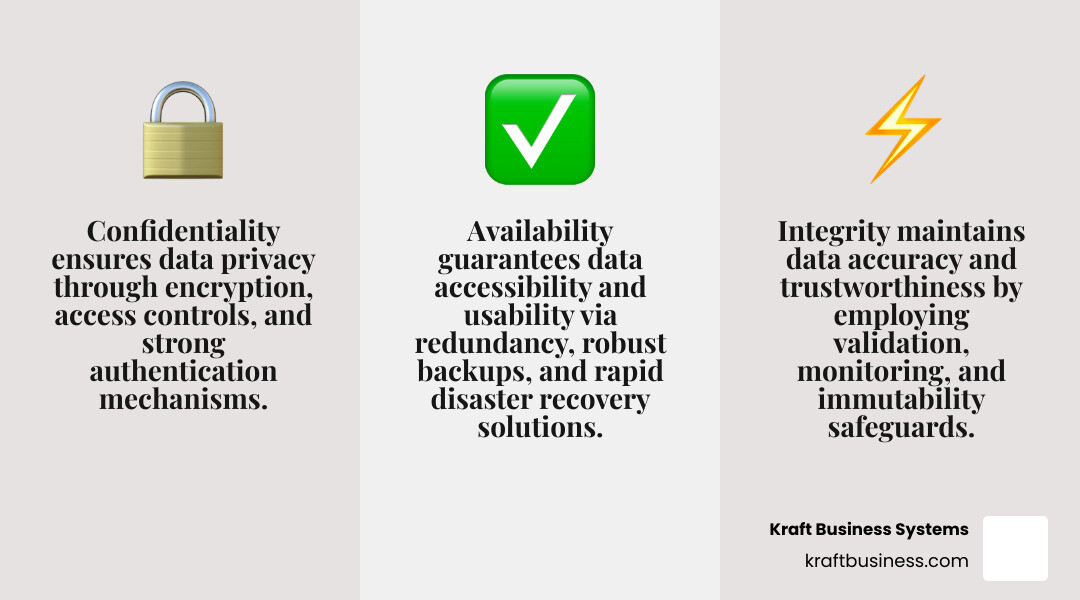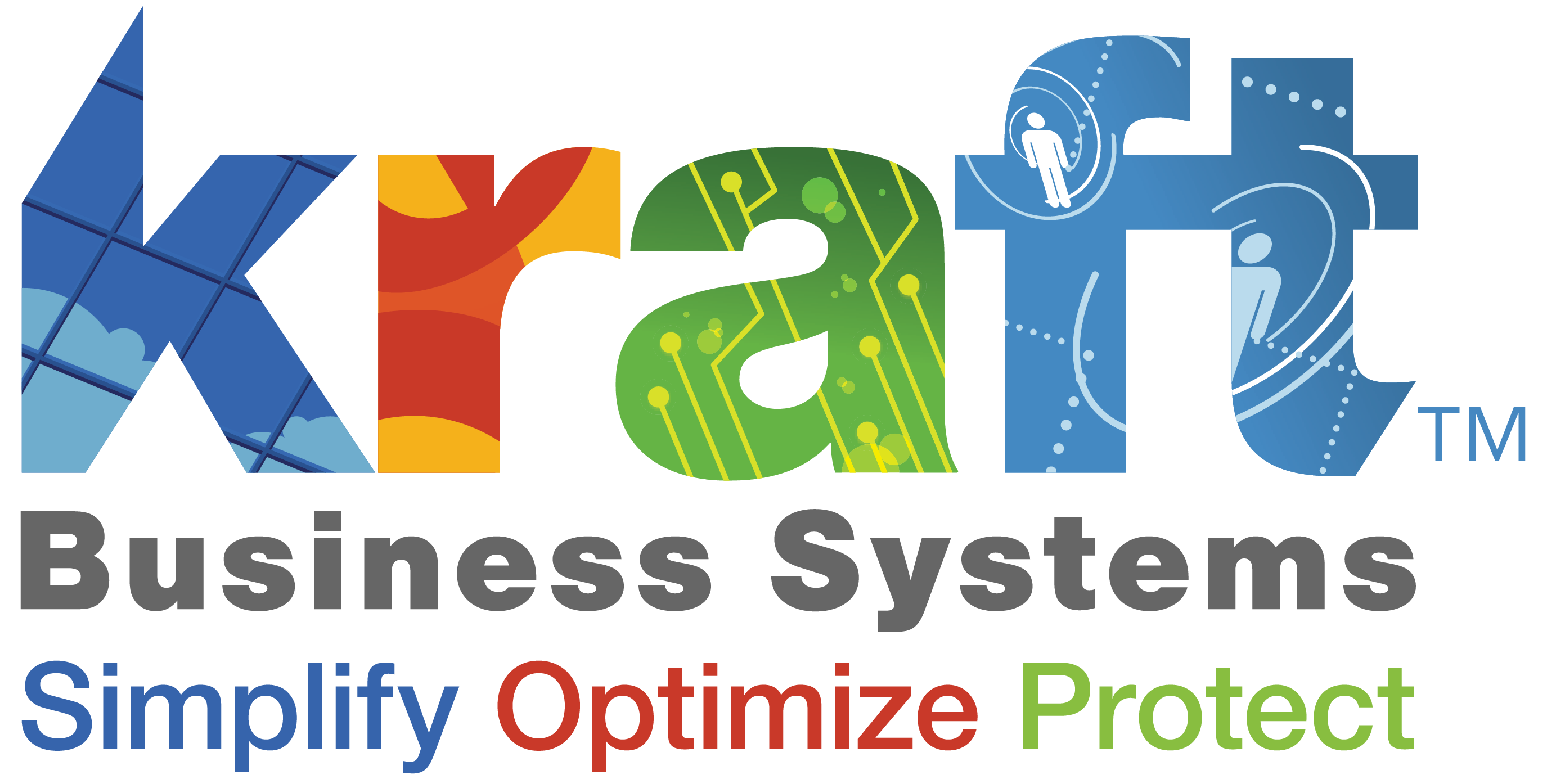Cloud data protection solutions are comprehensive security systems that safeguard your business data stored in cloud environments through encryption, backup, access controls, and threat detection. With over 60% of corporate data now residing in the cloud and cybercrime costs projected to reach $10.5 trillion annually by 2025, protecting your digital assets has become a business survival imperative.
Key components of effective cloud data protection include:
- Data encryption – Protects information both at rest and in transit
- Access control systems – Ensures only authorized users can access sensitive data
- Automated backup and recovery – Provides reliable data restoration capabilities
- Threat detection and response – Identifies and neutralizes security risks in real-time
- Compliance management – Helps meet regulatory requirements like GDPR and HIPAA
The shift to cloud computing has fundamentally changed how businesses store and manage their most valuable asset: data. While the cloud offers unprecedented scalability and flexibility, it also introduces new security challenges that traditional on-premises solutions simply can’t address.
Consider the stark reality facing businesses today. A single data breach can result in millions in fines – like the $5 billion penalty Facebook faced, or the exposure of 260,000 customer records that went unnoticed for over eight years at Toyota. These aren’t isolated incidents but part of a growing trend that threatens every organization moving to the cloud.
The good news? Proper cloud data protection isn’t just about preventing disasters – it’s about enabling your business to operate with confidence. Organizations using comprehensive protection strategies report up to 40% lower total costs of ownership, faster recovery times, and improved operational efficiency.
Similar topics to Cloud data protection solutions:
Cloud Data Protection Solutions: Definition, Importance, and Benefits
Why Cloud Data Protection is Non-Negotiable for Modern Businesses
Picture this: your business is humming along perfectly when suddenly, a cyberattack locks down your entire system. Customer data is compromised, operations grind to a halt, and your phone won’t stop ringing with angry clients. This nightmare scenario becomes reality for countless businesses every day, which is why cloud data protection solutions have evolved from “nice to have” to absolutely essential.
The stakes couldn’t be higher. We’re not just talking about inconvenience here – we’re talking about business survival. Data breaches can trigger devastating financial losses, destroy decades of carefully built reputation, and in some cases, force companies to close their doors permanently. With the explosion of digital data and our increasing reliance on cloud environments, protecting your information has become as critical as keeping the lights on.
The Soaring Importance of Securing Cloud Data
The digital change has fundamentally changed how we work, and frankly, there’s no going back. Remote work has become the new normal, applications live in the cloud, and data flows freely across networks that would have seemed impossible just a decade ago. This shift has created incredible opportunities for businesses to scale, innovate, and reach customers in ways we never imagined.
But here’s the catch: this digital revolution has also painted a massive target on our backs. The traditional security perimeter – those nice, neat boundaries around our office networks – has essentially vanished. Now our data lives everywhere, accessed by employees working from coffee shops, home offices, and co-working spaces around the globe.
The numbers tell a sobering story. Over 60% of corporate data now resides in the cloud, and cybercrime costs are projected to hit a staggering $10.5 trillion annually by 2025. Even more alarming? Research shows that 60% of small and medium businesses fold after experiencing a cloud malware attack. These aren’t just statistics – they represent real companies with real people whose livelihoods depend on staying secure.
The attack surface has expanded dramatically as our digital footprint grows. Every new application, every remote worker, every cloud service adds another potential entry point for cybercriminals. It’s like having a house with doors and windows scattered across multiple cities – securing it requires a completely different approach than the old “lock the front door” mentality.
For a deeper dive into the specific advantages of securing your cloud environment, check out our guide on Cloud Data Protection: Top Powerful Benefits. You’ll also want to explore our comprehensive overview of Cybersecurity Threats and Solutions. And if you’re running a smaller operation, don’t think you’re off the hook – our article on Small Business Data Protection shows why size doesn’t matter when it comes to being a target.
Key Benefits of a Robust Protection Strategy
Here’s the good news: investing in comprehensive cloud data protection solutions isn’t just about playing defense. A solid protection strategy actually makes your business stronger, more efficient, and more competitive. Think of it as insurance that pays dividends even when nothing goes wrong.
Improved visibility transforms your relationship with your own data. Instead of wondering where information lives or who’s accessing it, you get a clear, real-time picture of your entire digital estate. This isn’t just about security – it’s about understanding your business better. When you can see how data flows through your organization, you can spot inefficiencies, identify opportunities, and make smarter decisions.
Proactive risk mitigation means you’re not just waiting for bad things to happen. Modern protection solutions use artificial intelligence and advanced analytics to spot suspicious activity before it becomes a crisis. It’s like having a security guard who never sleeps and can recognize trouble from a mile away. This approach helps you stay ahead of threats instead of scrambling to respond after damage is done.
Simplified backups and rapid recovery take the stress out of data management. Cloud-native solutions can restore entire systems in hours instead of days, and they handle the complex backup scheduling automatically. No more late nights wondering if your backups actually worked – the system handles it all while you focus on running your business.
The financial benefits might surprise you. Organizations using comprehensive protection strategies report up to 40% lower total cost of ownership compared to traditional approaches. This happens through reduced operational overhead, better resource utilization, and pay-as-you-grow pricing models that scale with your business.
Improved compliance becomes much more manageable when protection is built into your systems from the ground up. Whether you’re dealing with GDPR, HIPAA, or industry-specific regulations, modern solutions help you meet requirements automatically rather than treating compliance as an afterthought. About 30% of IT professionals consider compliance their top priority, and for good reason – the penalties for getting it wrong can be devastating.
These benefits work together to create something invaluable: peace of mind. When your data is properly protected, you can focus on growing your business instead of constantly worrying about the next potential disaster. For more insights on maintaining business continuity, explore our resources on Cloud Disaster Recovery Solutions.
Common Problems in Cloud Data Security
Let’s be honest – cloud security can feel like trying to solve a puzzle where the pieces keep changing shape. Even organizations with the best intentions run into predictable challenges that can leave them vulnerable. Understanding these common pitfalls is the first step toward avoiding them.
Lack of visibility tops the list of headaches for most organizations. It’s surprisingly easy to lose track of where your data lives and who can access it, especially as your cloud footprint grows. A shocking 95% of IT professionals worry about their inability to see and control their cloud infrastructure adequately, while 87% fear that this blind spot is hiding cyber threats. You can’t protect what you can’t see, and many businesses find too late that they have data scattered across services they’d forgotten about.
Multi-cloud management complexity multiplies these visibility problems. Using multiple cloud platforms – which most businesses do – creates a patchwork of different security tools, policies, and interfaces. More than half of organizations struggle to maintain consistent security across these diverse environments. It’s like trying to manage multiple houses with different alarm systems, locks, and security companies.
Misconfigurations account for about 13% of cloud security breaches, and they’re often the most preventable. These mistakes can go unnoticed for years – Toyota’s cloud misconfiguration exposed data from 260,000 customers for over eight years before anyone caught it. The problem is that cloud platforms offer incredible flexibility, but with that flexibility comes the opportunity to accidentally leave digital doors wide open.
Data loss and leakage keeps 67% of cybersecurity professionals awake at night, and for good reason. While 67% of organizations store sensitive data in public clouds, 44% admit they’re not confident in their ability to protect it. This disconnect between necessity and confidence creates a dangerous gap that cybercriminals are eager to exploit.
Integration issues plague about 52% of IT professionals who try to add new security tools to their existing systems. Nothing’s more frustrating than buying a solution that promises to solve your problems, only to find it doesn’t play nicely with the tools you already use. This compatibility challenge often leads to security gaps or forces organizations to maintain multiple overlapping systems.
These challenges aren’t impossible, but they do require a strategic approach and the right expertise. For detailed strategies to overcome these obstacles, dive into our guides on Cloud Security Challenges and Solutions and Hybrid Cloud Security Solutions.
Cloud Data Protection Solutions: Definition, Importance, and Benefits
Core Technologies and Best Practices for Cloud Data Protection
Think of cloud data protection solutions as building a fortress around your most valuable business asset – your data. Just like a medieval castle had multiple layers of defense, effective cloud security requires a combination of foundational methods, advanced techniques, and modern innovations working together seamlessly.
The beauty of modern cloud protection lies in how these different technologies complement each other. While encryption scrambles your data into unreadable code, access controls decide who gets the keys to decode it. Meanwhile, AI-powered systems stand guard 24/7, watching for anything suspicious.
Foundational Security Methods
Every solid protection strategy starts with the basics – and these fundamentals are anything but basic when it comes to keeping your data safe.
Data encryption serves as your first and most crucial line of defense. Think of it as speaking in secret code that only authorized people can understand. We encrypt data both at rest (when it’s sitting quietly in storage) and in transit (when it’s traveling across networks). Advanced Encryption Standard (AES) and RSA are the heavy hitters here, turning your readable information into scrambled text that looks like gibberish to anyone without the proper key.
What makes encryption even more powerful is when you control your own keys through Key Management Services (KMS). It’s like having a master key that only you possess – even if someone breaks into the building, they still can’t open your safe.
Access control systems work like a sophisticated bouncer at an exclusive club. They don’t just check IDs; they verify whether each person should have access to specific areas. Role-Based Access Control (RBAC) assigns permissions based on job functions, while Attribute-Based Access Control (ABAC) gets even more granular, considering factors like location, time of day, and device type.
Identity and Access Management (IAM) tools enforce the principle of least privilege – giving people exactly what they need to do their jobs, nothing more. It’s surprisingly effective at preventing both internal mishaps and external threats.
Multi-factor authentication (MFA) recognizes that passwords alone are about as secure as a screen door on a submarine. MFA requires multiple forms of verification: something you know (password), something you have (phone or token), and something you are (fingerprint or face scan). Even if hackers crack your password, they still hit a wall trying to access your systems.
These foundational methods create a robust security baseline that every cloud-based business needs. For a deeper dive into how these concepts differ from privacy measures, check out our guide on Comparing Data Privacy vs. Data Security: What’s the Difference?.
Advanced Protection and Recovery Techniques
Once you’ve mastered the fundamentals, advanced techniques take your protection to the next level – and honestly, they’re where things get really interesting.
Data Loss Prevention (DLP) acts like a highly trained security guard who knows exactly what shouldn’t leave the building. These solutions continuously scan for sensitive information like customer records or intellectual property, then block unauthorized attempts to share, copy, or transmit that data. They’re particularly good at catching insider threats and accidental data leaks.
Data classification brings order to the chaos by organizing information based on sensitivity levels. Automated tools use machine learning to sort through massive amounts of data, tagging everything from public marketing materials to highly confidential financial records. Once classified, each category gets appropriate security controls – like having different levels of security clearance in a government facility.
Immutable backups represent one of the most effective weapons against ransomware attacks. These backups create copies that absolutely cannot be altered or deleted, even by someone with administrator access. When cybercriminals encrypt your files and demand payment, you can essentially tell them “thanks, but we’ll just restore from our untouchable backup instead.”
Automated disaster recovery transforms what used to be a nail-biting, all-hands-on-deck emergency into a smooth, orchestrated response. Modern systems can detect failures and begin restoration processes within minutes, often without human intervention. The goal is achieving Recovery Point Objectives (RPO) measured in seconds and Recovery Time Objectives (RTO) measured in minutes.
These metrics matter because they directly translate to business impact. An RPO of 15 minutes means you might lose 15 minutes of work in a worst-case scenario. An RTO of 30 minutes means you’re back up and running in half an hour instead of half a week.
For comprehensive guidance on implementing these strategies, explore our resources on Data Backup and Recovery: A Comprehensive Guide and our specialized Backup and Disaster Recovery Services.
The Role of AI and Automation in Modern Cloud Data Protection Solutions
Here’s where cloud security gets genuinely exciting – and a little bit like science fiction becoming reality. The sheer volume of cyber threats means human security teams simply can’t keep up anymore. We’re talking about analyzing millions of events per second across multiple cloud environments. That’s where artificial intelligence and automation become absolute game-changers.
AI-powered threat detection works like having a security expert with superhuman abilities watching your systems around the clock. These systems can analyze patterns across vast datasets, spotting anomalies that would take human analysts days to identify. They can detect over 750 types of secrets and cloud credentials lurking in public repositories and run thousands of security checks simultaneously.
The real magic happens when AI identifies threats that don’t match any known attack patterns. Traditional security tools look for signatures of known threats, but AI can spot entirely new attack methods by recognizing when something just doesn’t look right.
Automated remediation kicks in the moment a threat is detected. Instead of waiting for someone to get paged, analyze the situation, and decide on a response, automated systems can immediately isolate compromised systems, block malicious traffic, or roll back to clean configurations. This response time shrinks from hours to minutes – and minutes matter when you’re under attack.
Real-time monitoring provides the continuous visibility that 95% of IT professionals worry they’re missing. These systems never sleep, never take breaks, and never miss subtle changes that might indicate trouble brewing.
Perhaps most importantly, automation reduces human error – which accounts for 13% of cloud security breaches. When routine tasks run automatically according to predetermined rules, there’s no chance of someone forgetting a step or making a typo that opens a security gap.
The numbers tell the story: 69% of organizations admit they can’t effectively tackle cyber threats without AI, according to Capgemini Research Institute. IBM reports that companies using security AI and automation save an average of $2.22 million compared to those that don’t.
This isn’t just about efficiency – it’s about making security so seamless and effective that you can focus on growing your business instead of constantly worrying about the next potential threat.
Cloud Data Protection Solutions: Definition, Importance, and Benefits
Moving your data to the cloud isn’t like handing over your car keys to a valet – it’s more like co-piloting a plane where both you and your cloud provider have specific controls to manage. Understanding who handles what, and how to meet regulatory requirements, forms the backbone of effective cloud data protection solutions.
The Shared Responsibility Model is perhaps the most important concept to grasp when securing your cloud environment. Think of it like living in an apartment building – the landlord maintains the structure, plumbing, and electrical systems, while you’re responsible for locking your door and securing your belongings inside.
Cloud providers handle security of the cloud. This means they’re responsible for protecting the physical infrastructure, network controls, host operating systems, and the virtualization layer that makes cloud computing possible. They ensure the foundational platform is secure and operational.
You handle security in the cloud. Everything you put into that secure environment becomes your responsibility – your data, applications, user access controls, network configurations, and how you configure the services you use. This responsibility shifts depending on whether you’re using Infrastructure as a Service (IaaS), Platform as a Service (PaaS), or Software as a Service (SaaS).
The responsibility model isn’t just academic theory – it has real-world implications. Many security incidents happen because organizations assume their cloud provider handles everything, creating dangerous gaps in protection. Some forward-thinking providers are moving toward a shared fate model, where they become active partners in helping ensure your deployment stays secure.
This partnership approach recognizes that cloud security works best when both parties are invested in the outcome. To better understand how different cloud service models affect your responsibilities, check out our guide on What Are the Four Main Types of Cloud Computing?.
The Critical Role of Compliance and Data Sovereignty
Regulatory compliance isn’t just about avoiding fines – though those can be substantial. It’s about building trust with your customers and protecting your business reputation. The regulatory environment has become increasingly complex, with laws like GDPR affecting any organization that handles EU citizens’ data, regardless of where that organization is located.
GDPR compliance requires robust data protection measures including encryption, access controls, and the ability to demonstrate how personal data is processed and protected. The stakes are high – Facebook’s $5 billion penalty serves as a stark reminder of what happens when compliance falls short.
HIPAA requirements for healthcare organizations demand even stricter controls around patient data, including detailed audit trails and breach notification procedures. These aren’t suggestions – they’re legal requirements that can result in both financial penalties and criminal charges.
Data sovereignty and residency laws add another layer of complexity. These regulations dictate where your data can physically reside and which legal jurisdiction governs it. Some European data must stay within EU borders, while other countries have similar requirements for their citizens’ information.
This means your cloud data protection solutions must offer data localization capabilities, allowing you to choose specific geographic regions for data storage. You need visibility into exactly where your data lives and the ability to prove compliance through comprehensive auditing and reporting mechanisms.
The importance of getting this right cannot be overstated. Research shows that 30% of professionals see compliance as a top priority for earning and retaining customer trust. For detailed guidance on GDPR requirements, consult the official General Data Protection Regulation documentation.
Leveraging Frameworks for Stronger Governance
Rather than reinventing the wheel, smart organizations build their cloud security strategies on proven frameworks. These provide structured approaches that have been tested across thousands of implementations.
The NIST Cybersecurity Framework offers a comprehensive approach to managing cybersecurity risks. Developed by the National Institute of Standards and Technology, this voluntary framework provides a high-level strategic approach that works across industries. It focuses on five core functions: Identify, Protect, Detect, Respond, and Recover.
The Cloud Controls Matrix (CCM) from the Cloud Security Alliance takes a more cloud-specific approach. This framework provides detailed security controls and assessments specifically designed for evaluating cloud provider security postures and implementing comprehensive protection strategies.
These frameworks aren’t just academic exercises – they provide practical roadmaps for implementing effective cloud data protection solutions. They help ensure you’re not missing critical security controls and provide a common language for discussing security requirements with vendors and stakeholders.
Continuous learning is essential because the threat environment constantly evolves. What worked last year might not be sufficient next year. By grounding your approach in established frameworks and staying current with updates, you create a security posture that can adapt to new challenges.
For more insights on building comprehensive governance strategies, explore our detailed guide on Governance, Risk, and Compliance Framework. We also offer specialized guidance on IT Compliance and Governance to help you steer these complex requirements.
Choosing the Right Cloud Data Protection Solutions for Your Business
Finding the perfect cloud data protection solutions for your business doesn’t have to feel like searching for a unicorn in a server farm. With the right approach and guidance from experts like Kraft Business Systems, you can steer this process systematically and confidently.
Step 1: Assess Your Unique Security Needs
Before we start shopping around, we need to take a good, hard look at what we’re actually protecting. Think of it like doing a home security assessment before installing an alarm system – you need to know what you have and where the vulnerabilities lie.
Data findy and classification forms the foundation of this assessment. We need to know exactly what data we have, where it lives, and how sensitive it is. Are we dealing with highly confidential customer records, financial information, or less sensitive internal documents? This process involves identifying all our sensitive information and categorizing it based on importance and regulatory requirements.
Next comes our risk assessment. What specific vulnerabilities does our organization face? Which applications are being accessed, and by whom? What’s our risk tolerance level? Understanding these elements helps us prioritize our protection efforts and allocate resources where they’ll have the biggest impact.
Finally, we need to define our RPO and RTO requirements. Our Recovery Point Objective (RPO) tells us how much data loss we can tolerate, while our Recovery Time Objective (RTO) determines how quickly we need to be back up and running after an incident. These metrics are absolutely critical for selecting solutions that meet our business continuity requirements.
By thoroughly understanding our unique needs, we can define the scope and requirements for our cloud data protection solutions without overspending on unnecessary features or, worse, leaving critical gaps in our security. For more insights on how different storage types manage your data, check out 7 Types of Cloud Storage and How They Manage Your Data.
Step 2: Evaluate Key Solution Capabilities
Once we have a clear picture of our needs, it’s time to put potential solutions through their paces. Here’s what we look for when evaluating capabilities:
Visibility and control should be at the top of your list. Can the solution provide a comprehensive view of where your data lives and who’s accessing it across all your cloud environments? We need solutions that can distinguish between normal daily activities and potentially suspicious behavior. Without this visibility, we’re essentially flying blind.
Compatibility and integration can make or break your implementation. Will the solution play nicely with your existing technology stack, including DevOps tools, security systems, and monitoring platforms? Here’s a sobering fact: 52% of IT professionals experienced integration headaches when adding new cloud security tools due to compatibility issues. Look for solutions with open APIs that support your automation workflows without causing disruptions.
Backup and restoration capabilities are your safety net when things go wrong. Does the solution offer immutable backups to protect against ransomware? Can it provide granular restoration, allowing you to recover specific files or applications quickly? We need solutions that guarantee rapid recovery from data loss events, unplanned downtime, or cyber attacks.
Scalability and performance ensure your solution grows with your business. Can it handle increasing data volumes and expanding cloud footprints? Does it support multi-region deployments and maintain consistent policy enforcement across all environments? Your solution should scale efficiently without compromising performance.
Regulatory compliance and data sovereignty support helps you stay on the right side of the law. Does the solution help you meet relevant regulations like GDPR and HIPAA? Can it guarantee data residency requirements, keeping your data within specified geographic boundaries when required?
Step 3: Consider Total Cost of Ownership and Vendor Support
Looking beyond the initial price tag is crucial for making a smart long-term investment. The cheapest option upfront might end up costing you more in the long run.
Total Cost of Ownership (TCO) includes much more than the purchase price. We’re talking about ongoing operational costs, maintenance, training, and those sneaky hidden fees that pop up later. Some solutions might appear budget-friendly initially but require expensive additional infrastructure or generate high management overhead. Look for solutions that offer genuine TCO savings by reducing operational complexity and simplifying management.
Vendor support and partnership can be the difference between smooth sailing and stormy seas. What level of support does the vendor provide? Are there solid service level agreements (SLAs) for response times? Do they offer 24/7 support when you need it most?
This is where partnering with a Managed Security Service Provider (MSSP) like Kraft Business Systems really pays off. We don’t just sell you a solution and wave goodbye – we provide ongoing support and guidance throughout your journey. Our diverse team of consultants and industry experts works with you to address your unique business challenges.
Located right here in Grand Rapids, Michigan, we serve businesses across the state, including Acme, Ann Arbor, Detroit, Lansing, and Traverse City. We understand the local business landscape and are always here to help you steer the complexities of cloud data protection. For more information about working with an MSSP, explore our insights on Managed Security Service Provider (MSSP).
Frequently Asked Questions about Cloud Data Protection
We get a lot of questions from business owners who are trying to wrap their heads around cloud data protection solutions. It’s completely understandable – the cloud security world can feel overwhelming at first glance. Let’s tackle the most common questions we hear to help clear up any confusion.
What is the difference between cloud data security and data privacy?
This question comes up constantly, and it’s a great one because these terms get thrown around interchangeably when they’re actually quite different. Think of it like this: security is your “how” and privacy is your “what and who.”
Cloud data security focuses on the protective measures and technologies we use to keep your data safe from hackers, corruption, or accidental loss. It’s all about maintaining confidentiality, integrity, and availability – what we call the CIA triad. Security involves things like encryption, access controls, firewalls, and threat detection systems that act as your digital bodyguards.
Data privacy, on the other hand, deals with individual rights regarding personal information. It covers how data gets collected, stored, used, and shared. Privacy ensures people have control over their information and that it’s handled according to their wishes and legal requirements like GDPR.
Here’s a simple example: your company might have rock-solid security systems protecting customer data from breaches, but if you share that data without customer consent, you’ve violated their privacy. You can have security without privacy, but you absolutely cannot have privacy without security – they work hand in hand.
For a deeper dive into this topic, check out our detailed comparison in Comparing Data Privacy vs. Data Security: What’s the Difference?.
What are the main types of cloud data protection solutions?
The world of cloud data protection solutions offers several specialized tools, each designed to tackle different security challenges. Let’s break down the main players:
Backup and Recovery forms the foundation of any protection strategy. This involves creating secure copies of your data and storing them separately to protect against accidental deletion, corruption, or cyberattacks. It’s your safety net when things go wrong.
Disaster Recovery as a Service (DRaaS) takes backup protection several steps further by providing a complete managed solution for replicating and recovering your entire IT infrastructure during a disaster. This ensures your business keeps running even when disaster strikes.
Data Loss Prevention (DLP) acts like a watchful security guard, detecting and preventing sensitive information from leaving your organization through unauthorized channels. It’s particularly valuable for protecting customer data and intellectual property.
Cloud Access Security Broker (CASB) functions as a gatekeeper between your users and cloud services. It enforces security policies, provides visibility into how your team uses cloud applications, and protects against various threats.
Cloud Security Posture Management (CSPM) continuously monitors your cloud environments for misconfigurations, compliance violations, and security risks. Think of it as your cloud environment’s health monitor, helping maintain a strong security posture.
Cloud Workload Protection Platform (CWPP) secures your workloads – like virtual machines, containers, and serverless functions – across hybrid and multi-cloud environments. It provides protection against vulnerabilities and threats at the workload level.
These solutions often work together like a well-coordinated team to create comprehensive protection for your business.
Can I rely solely on my cloud provider’s native security tools?
This is probably the question we hear most often, and the short answer is: not really. While cloud providers like AWS, Azure, and Google Cloud offer incredibly powerful native security tools, depending entirely on them leaves some important gaps.
Remember the Shared Responsibility Model we discussed earlier? Cloud providers handle security of the cloud infrastructure, but you’re responsible for security in the cloud. Their native tools cover their part beautifully, but your part still needs attention and specialized solutions.
Native tools provide an excellent baseline but might not address every specific requirement for your particular data types, applications, or compliance needs. They’re designed to be broadly applicable, which sometimes means they don’t dive deep enough into specialized areas.
If you’re operating across multiple cloud platforms, relying solely on native tools means juggling different security consoles, policies, and reporting formats from each provider. This creates information silos and significantly increases complexity. Over half of organizations struggle with managing complete security solutions across multi-cloud environments.
The most effective approach uses a “defense-in-depth” strategy – multiple layers of security controls working together. This typically involves integrating specialized third-party cloud data protection solutions that offer advanced capabilities like sophisticated DLP, specific compliance reporting, or improved ransomware protection. These solutions complement and extend what your cloud provider offers.
Think of native tools as the foundation of your security house – essential and strong, but you still need walls, a roof, and security systems to create a truly secure environment. For expert guidance on building that complete security architecture, explore our Cloud Security services.
Conclusion: Fortify Your Digital Future with Proactive Cloud Security
The cloud has opened doors we never imagined possible – giving businesses the power to innovate faster, scale globally, and adapt to changing markets with remarkable agility. But with great power comes great responsibility, and that responsibility centers on protecting what matters most: your data.
We’ve explored how cloud data protection solutions have evolved from a nice-to-have into an absolute business necessity. With cybercrime costs projected to hit $10.5 trillion by 2025 and over 60% of corporate data now living in the cloud, the question isn’t whether you need comprehensive protection – it’s how quickly you can implement it.
Think about it this way: every day you delay is another day your business operates without a safety net. The Toyota incident we mentioned earlier? That data exposure went unnoticed for eight years. Eight years of vulnerable customer information, simply because the right protection wasn’t in place.
But here’s the encouraging news – you don’t have to figure this out alone. At Kraft Business Systems, we’ve seen how the right cloud data protection solutions transform businesses from reactive to proactive, from vulnerable to resilient. We’ve watched companies achieve up to 40% lower total costs while dramatically improving their security posture.
Our approach goes beyond just selling you technology. We become your trusted partner, helping you steer the shared responsibility model, meet complex compliance requirements, and select solutions that actually fit your unique needs. Whether you’re dealing with GDPR requirements, managing multi-cloud environments, or simply trying to sleep better at night knowing your data is secure, we’re here to guide you through every step.
Located right here in Grand Rapids, we serve businesses throughout Michigan who understand that business resilience starts with smart security decisions. Our diverse team of consultants and industry experts brings real-world experience to your unique challenges – because cookie-cutter solutions rarely work in the real world.
The digital future belongs to businesses that accept both innovation and security. Don’t let data protection become an afterthought that keeps you up at night. Take the proactive step that will give you the confidence to grow, innovate, and thrive in the cloud.
Ready to transform your approach to cloud security? Secure your cloud environment with expert guidance and find how the right protection strategy can become your competitive advantage.
